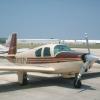NEW NEWS FROM LASAR AND MOONEY AS OF 10/2/2025
-
Members Online
- WilliamR
- rklems
- Sabremech
- ajudson
- D-EDDN
- DrewAviation
- eman1200
- kortopates
- Shrobby
- LANCECASPER
- Shadrach
- Jake@BevanAviation
- Hall Liu
- MDMooney
- DXB
- Crawfish
- Joshua Blackh4t
- N201MKTurbo
- exM20K
- dakotalewellen
- JimC67
- Fix
- Aerodon
- Marc_B
- flat_function
- brad
- hnorber
- Raistlin
- AndreiC
- GBFlyer
- Probst Aircraft Tooling
- mgtrevor


Recommended Posts